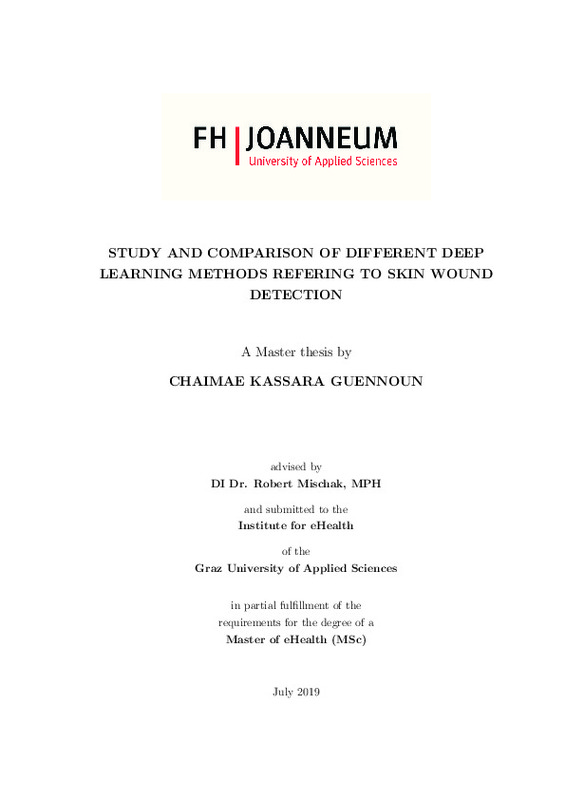JavaScript is disabled for your browser. Some features of this site may not work without it.
Buscar en RiuNet
Listar
Mi cuenta
Estadísticas
Ayuda RiuNet
Admin. UPV
Estudio y comparación de diferentes métodos de aprendizaje profundo referidos a la detección de heridas en la piel
Mostrar el registro completo del ítem
Kassara Guennoun, C. (2019). Estudio y comparación de diferentes métodos de aprendizaje profundo referidos a la detección de heridas en la piel. http://hdl.handle.net/10251/141490
Por favor, use este identificador para citar o enlazar este ítem: http://hdl.handle.net/10251/141490
Ficheros en el ítem
Metadatos del ítem
| Título: | Estudio y comparación de diferentes métodos de aprendizaje profundo referidos a la detección de heridas en la piel | |||
| Autor: | Kassara Guennoun, Chaimae | |||
| Director(es): | ||||
| Entidad UPV: |
|
|||
| Fecha acto/lectura: |
|
|||
| Resumen: |
[ES] La presente tesis de maestría trata sobre la detección de heridas cutáneas basadas en redes neuronales en MatLab. MatLab permite a los usuarios integrar arquitecturas de aprendizaje profundo preentrenadas gracias a ...[+]
[EN] The present Master Thesis deals with neural-network-based skin wound detection on MatLab. MatLab allows the users to integrate pretrained deep learning architectures thanks to the Neural Network Toolbox, for this ...[+]
|
|||
| Palabras clave: |
|
|||
| Derechos de uso: | Reconocimiento - No comercial (by-nc) | |||
| Editorial: |
|
|||
| Titulación: |
|
|||
| Tipo: |
|
recommendations
Este ítem aparece en la(s) siguiente(s) colección(ones)
-
ETSII - Trabajos académicos [10404]
Escuela Técnica Superior de Ingenieros Industriales







